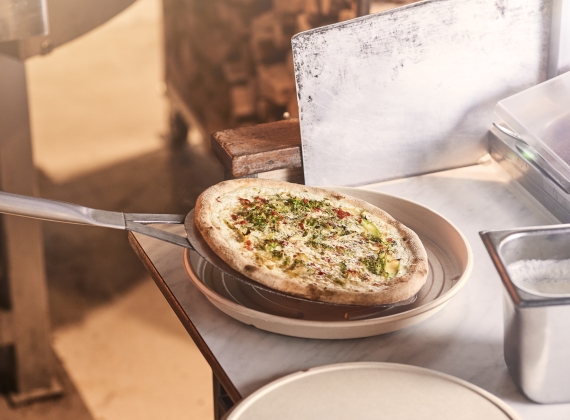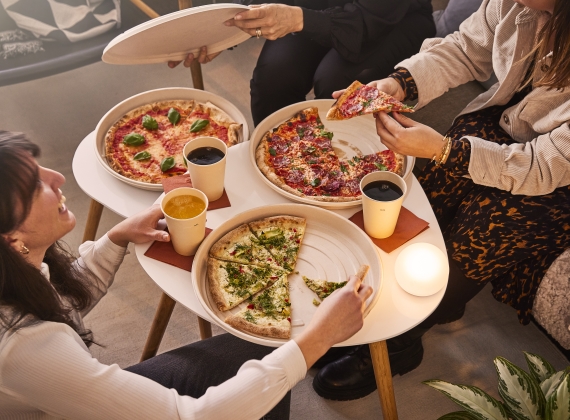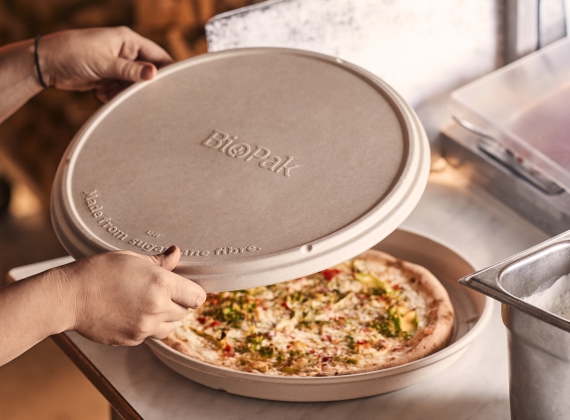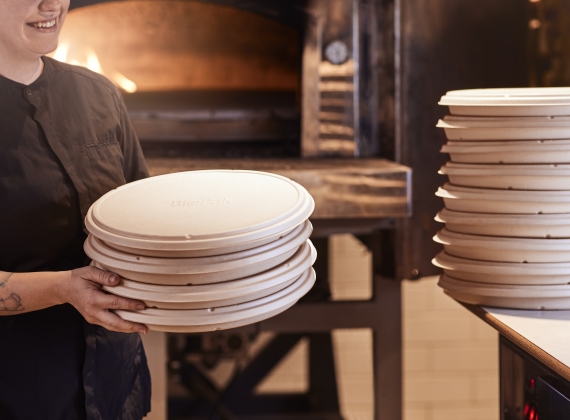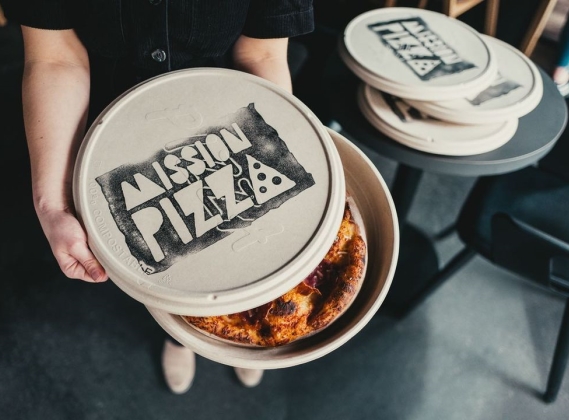From an ecological point of view, bagasse is the clear winner as the best pizza packaging. The reason for this is its economical processing as an upcycled product from sugar production. Neither cultivation area nor energy-intensive processing steps are necessary here. The production of cardboard and paperboard can also be designed to conserve resources, but inevitably requires wood fibers. Suppliers in the food service industry can ensure that these fibers originate from environmentally compatible sources by looking for credible environmental seals of approval. However, there are enough black sheep among third-party suppliers who obtain their raw material by cutting down forests.
What makes a good pizza box?
Not all pizza boxes are the same. For the sake of their customers, suppliers should pay attention to some quality features in the processing. The pizza box should be large enough to hold the pizza without pressure or deformation. The right dimensions will also make it easier for your delivery people to transport and handle. In addition, the box should be sturdy enough to support the weight of the pizza and prevent it from sliding or tipping over. Also, keep in mind that pizza boxes are often stacked - during delivery as well as when they are dropped off at the front door.
Pizza boxes made of bagasse hold another advantage - and that is their insulating effect. The packaging keeps the pizza warm and at the same time prevents oil and moisture from leaking out. So your customers don't have to worry about greasy residue on the dining table. Another plus: the packaging should be easy to open and close. While this sounds trivial, annoying cardboard tabs can frustrate many pizza lovers.

